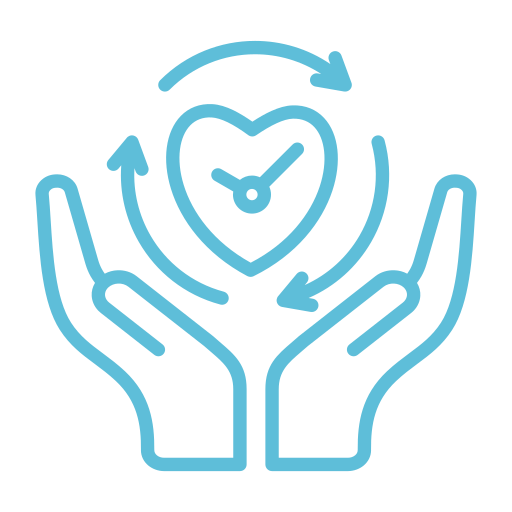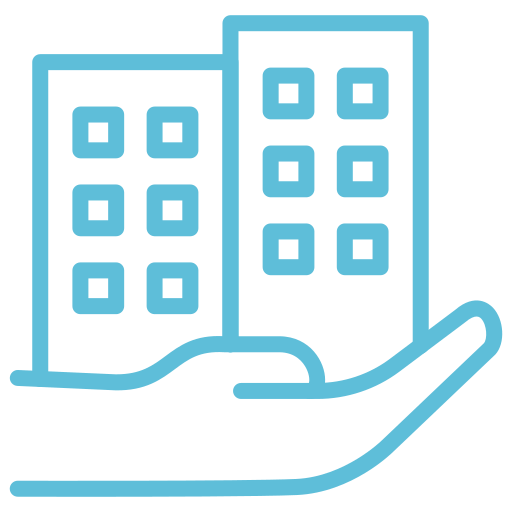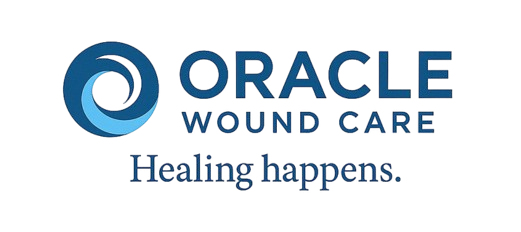The Science of Healing: How Your Body Repairs
Wounds in 4 Key Stages
The Science of Healing: How Your Body Repairs Wounds in 4 Key Stages
In skilled nursing facilities (SNFs), assisted living communities (ALFs), hospitals, home health
agencies, hospice agencies, and primary care networks, timely wound healing is essential—not
only for patient outcomes but for reimbursement, compliance, and census retention.
At Oracle Wound Care, we partner with healthcare facilities and provider groups nationwide to
improve wound care outcomes through evidence-based, mobile and telehealth solutions.
Whether you serve post-acute patients, high-risk seniors, or homebound individuals,
understanding the four phases of healing—hemostasis, inflammation, proliferation, and
remodeling—can directly impact recovery rates, hospitalization avoidance, and quality metrics.
This guide outlines how wound healing works, how to spot healing delays, and how partnering
with Oracle Wound Care helps your team manage risk, improve star ratings, and avoid costly
complications.
Top Healing Insights for Healthcare Providers
1. Wound healing is active—not passive. Timely intervention reduces rehospitalizations.
2. Moist wound environments heal 50% faster. Our team uses advanced dressing
protocols.
3. Nutrition drives healing. Malnourished patients are up to 50% slower to heal.
4. Immunocompromised patients need closer monitoring.
5. Early detection avoids chronic wounds and legal exposure.
Stage 1: Hemostasis – Controlling Bleeding and Exposure
Hemostasis is the body’s immediate response to injury, critical in preventing blood loss and
initiating repair. In clinical settings, timely documentation and accurate wound staging start here.
Platelets form a plug, clotting factors stabilize it, and a temporary shield forms—giving your
wound care team a chance to intervene effectively.
Stage 2: Inflammation – Clinical Signs of Engagement
Inflammation isn’t a red flag—it’s a signal that the immune system is activating. For SNFs,
HHAs, or IPAs managing chronic conditions, identifying this phase early can prevent avoidable
escalations. Redness, swelling, or warmth should be expected—but should also be monitored to
differentiate between normal and problematic inflammation.
Stage 3: Proliferation – Building Tissue & Reducing Risk
This is the phase where the wound begins to regenerate. With proper protocols in place, your
wound rounds or telehealth assessments can track:
● Collagen production (by fibroblasts)
● Angiogenesis (blood vessel regrowth)
● Epithelial migration (skin cell coverage)
Partnering with Oracle Wound Care ensures all of this is documented, coded correctly, and
followed with evidence-based interventions.
Stage 4: Maturation – Closing the Loop Clinically
Maturation involves tissue remodeling—critical for discharge planning, long-term outcomes, and
minimizing re-ulceration risk. Our providers ensure consistent follow-up and standardized
discharge summaries with wound healing progress fully captured.
Why Facilities Partner With Oracle Wound Care
Whether you’re managing CMS audits, aiming for 5-Star ratings, or reducing preventable
readmissions, our program helps you achieve measurable outcomes:
● Reduce wound-related hospitalizations
● Improve star ratings and PDPM reimbursement
● Close care gaps with mobile and telehealth access
● Provide continuity across SNFs, ALFs, HHAs, and hospice
● Minimize legal and survey risk
Provider Network Benefits
Our solutions are designed for:

Skilled Nursing Facilities (SNFs)
PDPM optimization and survey support

Assisted Living Facilities (ALFs)
Prevent escalation of wounds to hospitals

Hospitals
Post-discharge wound continuity and 30-day readmission reduction

Home Health Agencies (HHAs)
Partner wound expertise for complex patients

Hospice Agencies
Palliative wound support with comfort-driven focus

PCPs, IPAs & ACOs
Chronic wound oversight and cost containment

Medical Groups / MSOs
White-labeled wound care for multisite expansion
Clinical Impact Stats
● Moist wound care = 50% faster healing
● Malnutrition = up to 50% delay in healing
● Diabetic ulcers = impaired immune recruitment
● Early wound detection = 35% fewer hospitalizations
FAQs – For Your Care Team
Look for size reduction, pink granulation tissue, and no foul odor or pus. Pain should decrease,
not increase.
Malnutrition, unmanaged diabetes, vascular disease, or missed dressing changes are the most
common risk factors.
Contact Oracle Wound Care for in-service training, staff education, and 24-hour telehealth
backup.
Call Today – Let’s Improve Your Wound Care Outcomes
Partner with Oracle Wound Care and bring expert wound healing to your facility or provider
network.
Schedule a free in-service consult. Let’s reduce risk, improve outcomes, and deliver
exceptional wound care—together.



